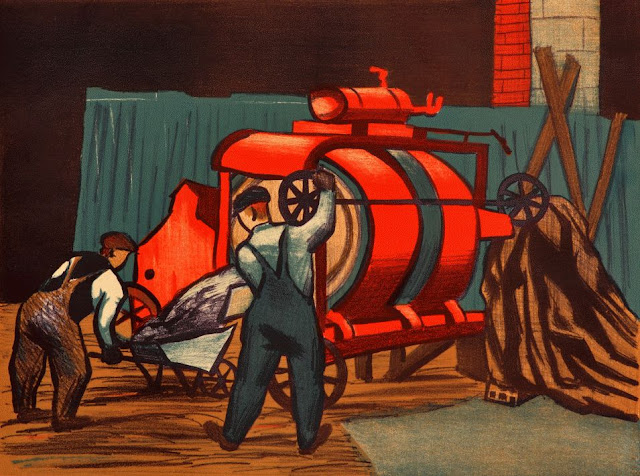
Above: A WPA poster, advertising the WPA production of Dragon's Wishbone. This children's play was written by Joan and Michael Slane, specifically for the WPA, and was performed in Denver, Tampa, and at least one other location from about October 1938 to March 1939. The play is about a boy who keeps saying "I can't," takes a trip to the moon with his college-educated cat, and "is swished away by the 'I can't' witch and is held for torture. From then on he has many ups and downs and after a difficult struggle he regains the dragon's wishbone which is the only means by which he may return home" ("WPA Theater Will Present Comic Fantasy," The Tampa Times, February 20, 1939, p. 3). Image courtesy of George Mason University.

Above: A scene from a Tampa, Florida performance of Dragon's Wishbone. Left to right are Peggy Jennison (who played the boy's college-educated cat), Helen Mae Church, and Billy Dale. Photo by Roscoe Frey, appearing in The Tampa Tribune, February 22, 1939 edition, courtesy of newspapers.com, used here for educational, non-commercial purposes.

Above: In addition to playing the educated cat in Dragon's Wishbone, Peggy Jennison starred in several other WPA productions in Florida, including Boy Meets Girl, Gallow's Gate, and Counselor at Law. Apparently, she was well known for her comedic talents. After her time in the WPA she continued acting in theater well into the 1940s (and perhaps beyond). She married her first husband, Alfred Lippe, sometime between 1936 and 1945, and the two had five children together. In 1963, she married a second time, to Frank A. Armstrong, Jr. (a retired Air Force General, and the main inspiration behind Gregory Peck's character in the 1949 movie Twelve O'Clock High). She also became the vice president of the Tampa Blueprint Company. This might be the same Tampa Blue Print Company that today celebrates over 50 years of business, and is a "certified small and woman owned minority business enterprise." Photo from The Tampa Tribune, July 28, 1936, courtesy of newspapers.com, photographer unknown, used here for educational, non-commercial purposes.

Above: Peggy Jennison as Elvira, a ghost who tries to foil her husband's second marriage, in a performance of the comedy Blithe Spirit, in Birmingham, Alabama, 1946. Peggy Jennison Armstrong died on March 23, 1973, at the age of 55. She was survived by three sons, two daughters, and two grandchildren ("Armstrong," The Tampa Tribune, March 24, 1973, p. 16). May she rest in peace. Photo from The Birmingham News, October 22, 1946 edition, courtesy of newspapers.com, photographer unknown, used here for educational, non-commercial purposes.

